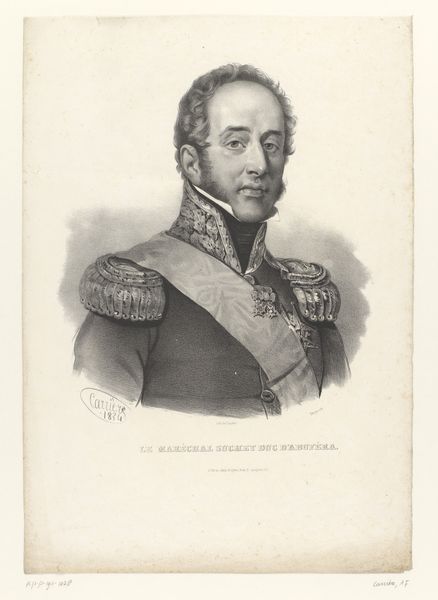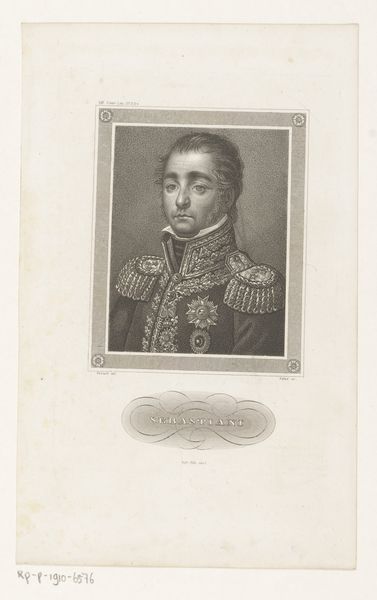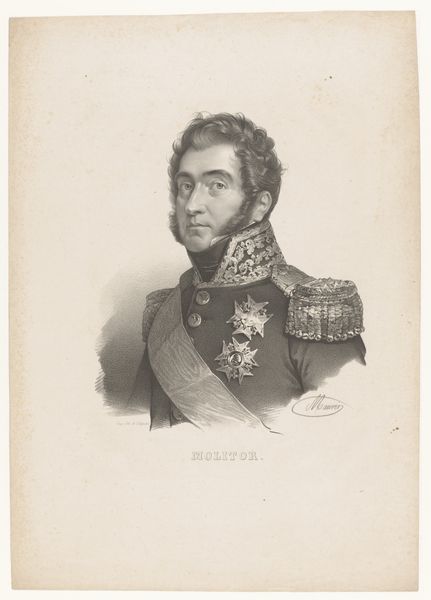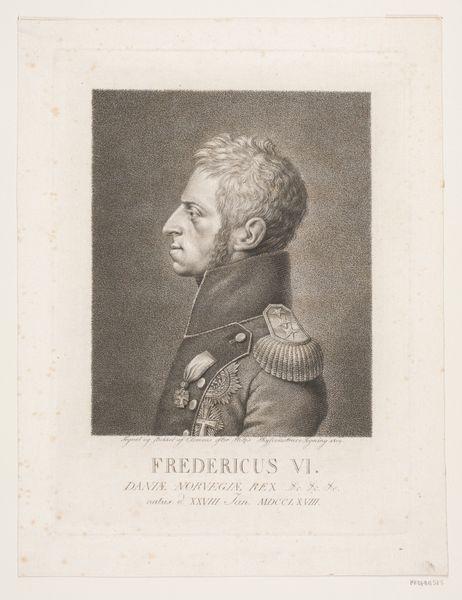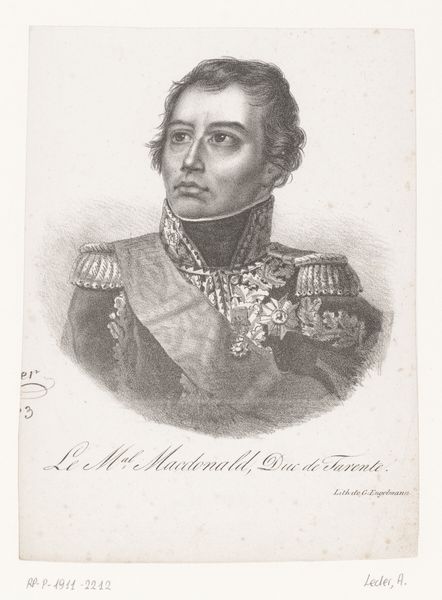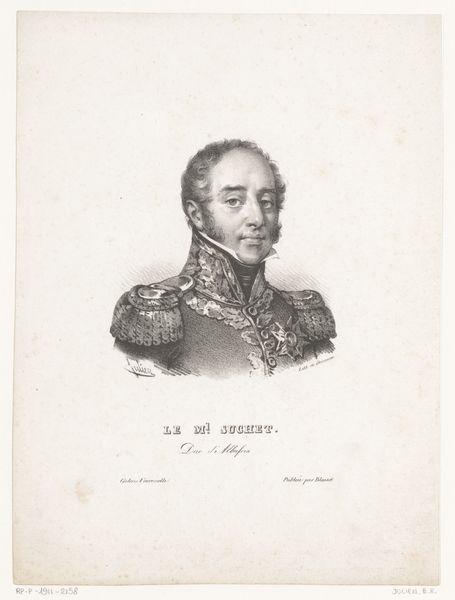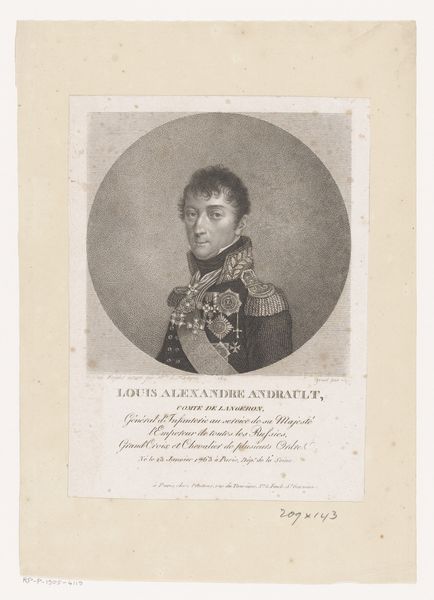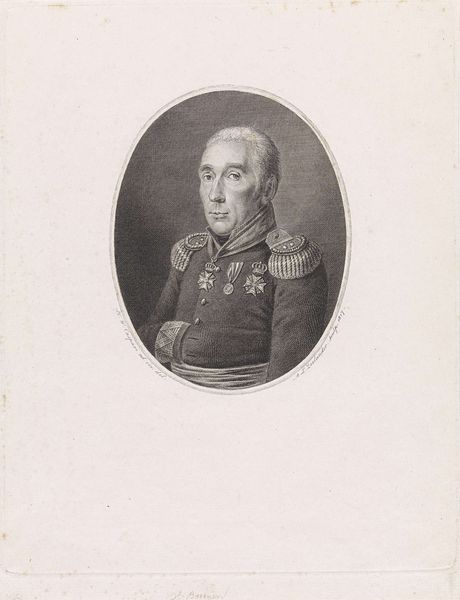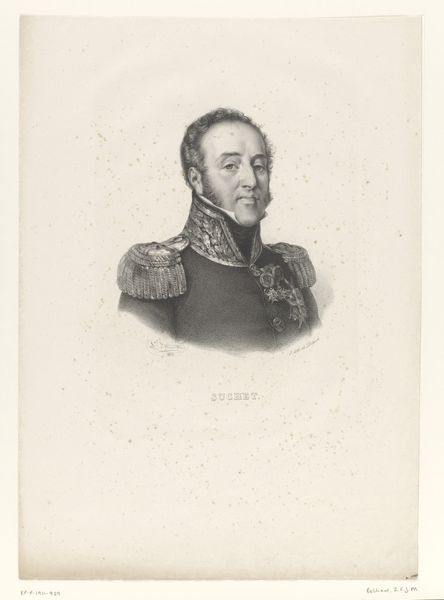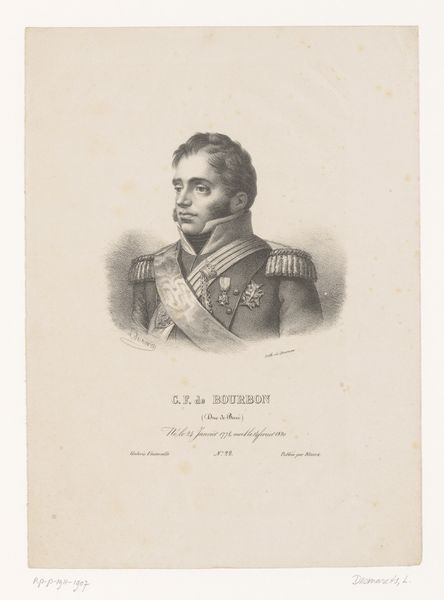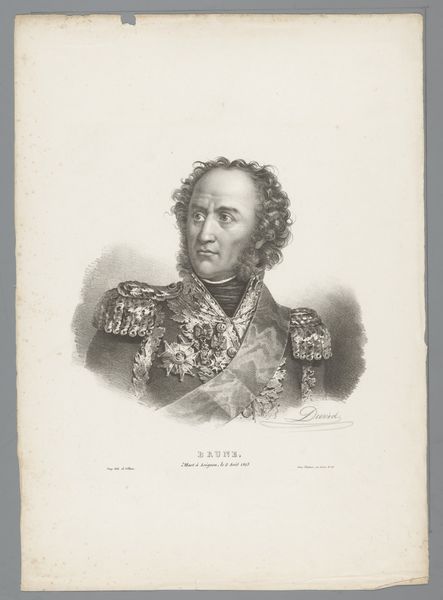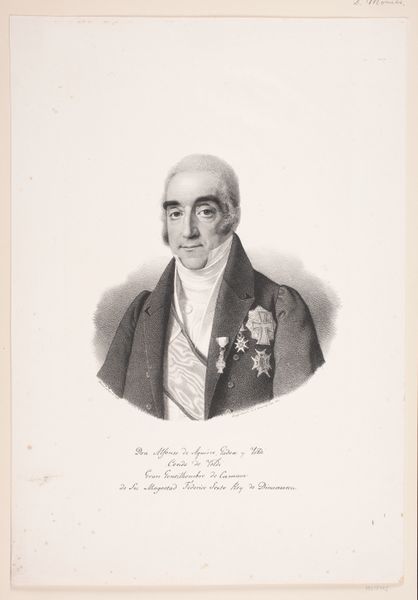
print, engraving
#
portrait
# print
#
old engraving style
#
romanticism
#
academic-art
#
engraving
Dimensions: height 546 mm, width 360 mm
Copyright: Rijks Museum: Open Domain
This is Bernard Romain Julien’s lithographic portrait of General Sébastiani. Lithography is a printmaking process using a flat stone or metal plate. The artist draws an image on the surface with a greasy medium, then applies ink, which adheres only to the drawn areas. The print is then made by pressing paper against the prepared surface. Lithography allowed for a relatively quick and inexpensive means of reproducing images. The artist would have needed a steady hand to create such a detailed depiction of the sitter. Notice how the lithographic process captures the general's likeness, but also renders the textures of his elaborate uniform, complete with epaulettes and medals. The material properties – the ink, the stone, the paper – all contribute to the final image. The lithograph democratized the distribution of imagery in the 19th century, making portraiture accessible beyond the elite circles who could afford painting. This particular print speaks to the rise of a middle class with its own visual culture, and to the new technologies that enabled its production and circulation.
Comments
No comments
Be the first to comment and join the conversation on the ultimate creative platform.
